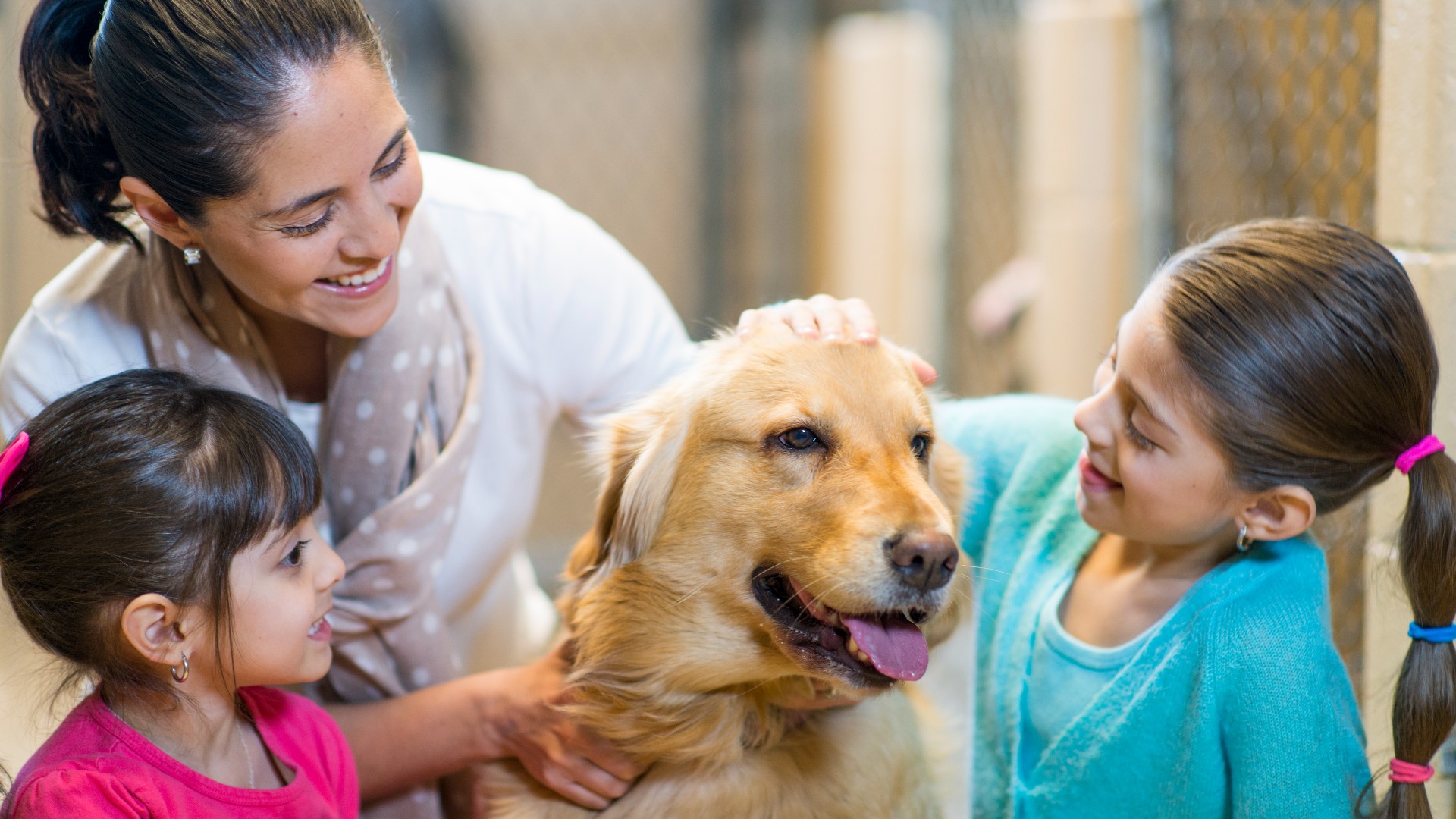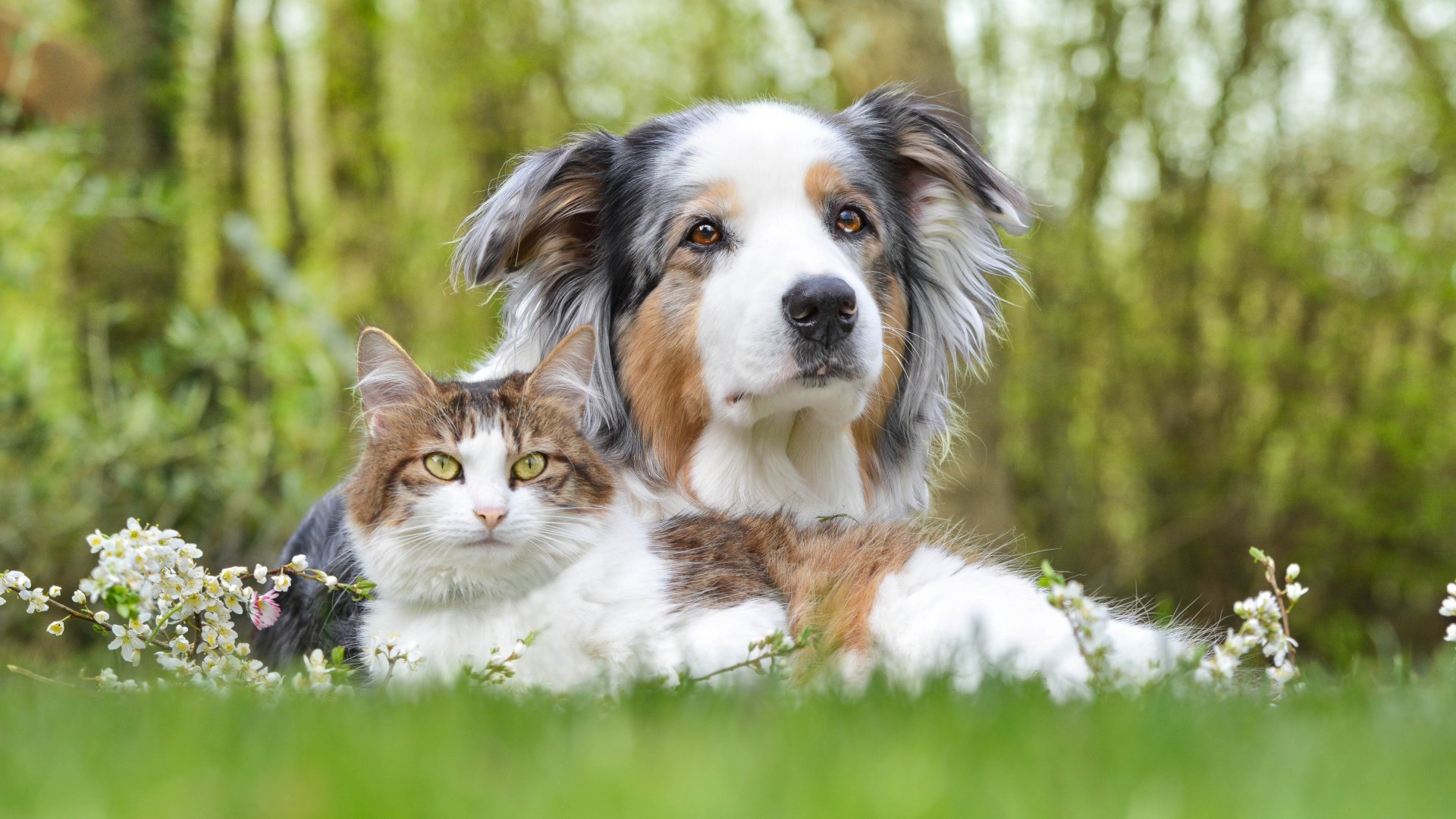Eight things you need to know before getting a rescue dog
Thinking about welcoming a rescue dog into your family? Expert behaviorist Jan Barley reveals eight things you want to consider before you adopt

It's an exciting day. Your new rescue dog is coming home! You imagine long walks in the park and cozy snuggles with your furry friend in front of the TV. It's a lovely vision. Still, sometimes, a rescue dog presents challenges for new owners and it’s worth being aware of these to help make the transition as smooth as possible for you both.
There tends to be three phases of a rescue dog: coping with sudden changes, settling in at home, and becoming comfortable and confident. These phases upon being rehomed can often be quite dramatic, so patience is key when it comes to helping your new fur friend settle in.
As a dog behaviorist, owners typically require my services when their dog's behavior escalates. From choosing a dog to suit your lifestyle to finding the longest-lasting dog chews, there's much to consider before your dog comes home.
Choose a dog that suits your lifestyle
You may love hiking and want a dog that thrives on exercise. Or you may live in an apartment and want a cuddly companion happy to sit with you whilst you write your novel.
Some breeds are couch potatoes; others need constant physical or mental stimulation. The closer you match a dog with your personality and lifestyle, the less likely you will encounter problems.
Be prepared
If possible, visit the dog a few times and take him for walks before bringing him home. That way, when your furry friend joins the family, he feels more confident because he already knows you.
The longer your dog has spent in the shelter, the harder it might be for him to adjust. It can take several months for a rescue dog to adapt to a new home. During that time, his behavior may be challenging.
Get the best advice, tips and top tech for your beloved Pets
Behavioral issues are the main reason for rejecting a newly adopted dog. It can be easier to manage potential problems, especially for large or high-energy breeds, if the home has a garden or yard, somewhere the dog can "hang out" unrestricted,
It's important that the entire family is on the same page for training the dog because consistency is vital for his learning. Decide who will feed, walk and train him each day.
Manage the first week

It's tempting to devote time to your rescue dog when he comes home, but that can cause issues. For example, if you take a week off work, the dog becomes used to you being with him constantly. When you return to work, he may experience separation anxiety (check out our guide to how to reduce separation anxiety in dogs if you find yourself struggling with this issue).
If you're bringing a rescue puppy home, avoid non-stop cuddling and give him regular time to be alone so he learns how to self-soothe.
Give your dog a space to call his own
Before your dog comes home, set up a space for him, such as a crate with a cozy bed and one or two toys. You might want to cover the crate with a blanket if the dog is nervous.
A crate is not for time-out or punishment. It should be a safe place where a dog can go to rest or when feeling unsure about a situation.
Ask the shelter if there is anything you can bring home that belongs to the dog so he has something to cuddle or play with that smells familiar.
Dog proof your home and garden
Many rescue shelters insist on a garden with 6' fencing because it's surprising how high a dog can jump. Repair flimsy fencing and lock away dangerous chemicals like slug pellets and weedkillers.
Decide where your dog is allowed to go in the home. If you don't want him to go upstairs, you might want to attach a baby gate. Depending on the dog's history, he may never have lived in a home, so he doesn't know how to behave.
Some dogs can open doors, including fridges and cupboards, so prepare for that. Put food out of reach and secure anything toxic, like cleaning supplies.
Put your clothing and shoes away from temptation. One of my dogs once destroyed an expensive pair of walking boots. That was entirely my fault as I didn't put them away when I went out.
Give your dog one or two safe toys. Avoid leaving him alone with tennis balls or anything he could swallow. If you go out, you may want to give your dog a long-lasting chew to keep him occupied.
Plan to introduce to your rescue dog to other pets

If you have another dog, allow time for them to get to know each other. If the shelter has a secure area, you can introduce them in a controlled environment.
Be aware that your current dog may resent the attention the new rescue dog is getting from you, and allocate your time accordingly. Introduce cats and small furries safely; in time, they will get used to each other.
Walk the dog as soon as you get home
Walking with your dog when you get home helps build an immediate bond. This one step alone can greatly affect how quickly a dog settles into a new home.
When I brought my rescue dog, Ellie, home, she was uncertain, and her body language was defensive. She'd been thrown out of a car in Ireland and had already had one failed adoption, so she didn't trust people.
Together with my other dog, I walked Ellie for five kilometers before bringing her into the home. On returning from the walk, she followed me around the house and was relaxed and happy.
Find a local dog training class
Your dog may have had little training, so classes can help him become more confident and social. Before attending, arrange a meeting with the trainer and ask questions about their training techniques and qualifications.
Avoid a trainer who talks about dominance, punishment, and pack leadership. We get the best from our dogs by being benevolent leaders, someone our dog can trust to be consistent, fair, and firm without bullying.
Training a rescue dog takes daily commitment. Break the training into bite-sized sessions of 5-10 minutes throughout the day. Even better, make training part of everyday life. For instance, ask your dog to sit before you feed him or when opening the door to go for a walk. Ask him to wait before jumping out of the car and sit before you take off his lead.
Rescuing a dog is a wonderful thing. If you're prepared, there's no reason it shouldn't be a positive experience from day one. Remember that your dog doesn't know you and may feel confused for weeks or months. Until that time, keep your dog on a lead unless you can let him free in a dog park or secure field.
Finally, know that, according to Sarah Whitehead of Think Dog, "If you own a dog, you are a trainer." Therefore, whenever you are with your rescue dog, you teach him what to do and what not to do. Start noticing when he is calm and well-behaved and praise him for making an effort, even if he sometimes gets it wrong.
Read next: All you need to know about street dogs

Jan is a dog behaviorist and writer living in the Cotswolds, UK. She qualified as a dog behaviorist in 2012 after training with Sarah Whitehead, a Certified Clinical Animal Behaviorist with a MSc in Animal Behavior. Jan has shared her life with dogs for over fifty years and is fascinated by behavior. She enjoys helping people better understand their dogs to develop a deep bond and enjoy time together. Jan particularly enjoys working with impulsive and reactive dogs as her legacy from helping Poppy, her rescue Weimaraner cross overcome fear reactivity.
